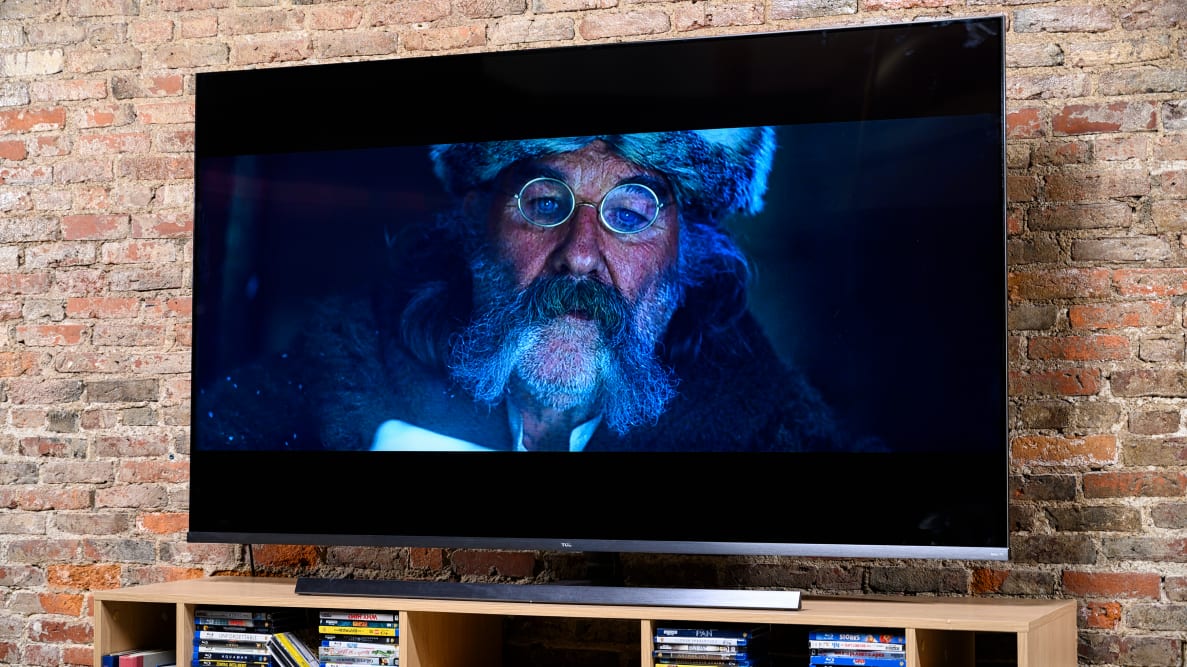Pros
-
Superb contrast
-
Excellent motion handling
-
Built-in Roku smart platform
Cons
-
Premium price tag
-
Chunky design
What makes the TCL 8-Series such an impressive TV are two factors: its quantum dots, which make for a searingly bright picture full of vivid colors. It’s among the brightest TVs we’ve ever tested, and TCL's never-before-used "mini-LED" technology, which is far better most full array backlight TVs (though not quite as impressive as OLED).
But performance comes at a price, and the 8-Series carries a price tag that I’d characterize as “appropriately hefty,” given its stellar performance. Its cost is still friendlier than some of the TVs it's competing with, but it doesn't have the type of value we typically associate with TCL Roku TVs. At the end of the day, though, if you’re looking for a top-tier TV with an easy-to-use, flexible smart platform, the TCL 8-Series is one of the best TVs money can buy right now.
About the TCL 8-Series
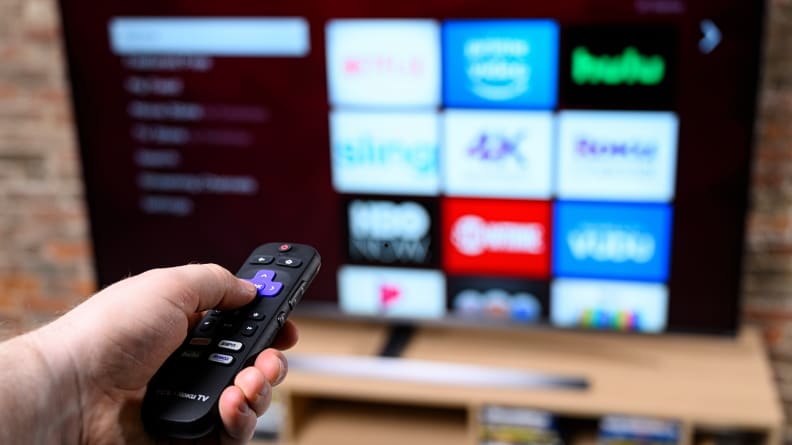
About the TCL 8-Series
The TCL 8-Series is available in just two sizes: 65 inches and 75 inches. Here’s how each of the models shakes out in terms of price:
• 65-inch TCL 8-Series (65Q825): MSRP $1,999.99 • 75-inch TCL 8-Series (75Q825): MSRP $2,999.99
Different sizes of TVs in a series tend to perform similarly to one another, unless elements of the TV's hardware change drastically between sizes. This often is the case with backlit TVs whose total number of LED zones is dependent on panel size. While it's true that, technically speaking, the TCL 8-Series is equipped with LED zones, TCL's mini-LED technology (which I'll explain further down the page) consists of several thousand tiny LEDs; enough of them that we don't expect the difference between each size to be noteworthy.
Being a quantum dot TV, TCL refers to the 8-Series as "QLED"—a term commonly associated with Samsung's quantum dot TVs.
Here are some of the key features of both the 65- and 75-inch versions of the TCL 8-Series:
• 4K (3,840 x 2,160) resolution • Quantum dot color • Mini-LED display • Supports High Dynamic Range (HDR10, HLG, and Dolby Vision) • Native 120 Hz refresh rate • Built-in Roku smart platform • DCI-P3/10-bit color space
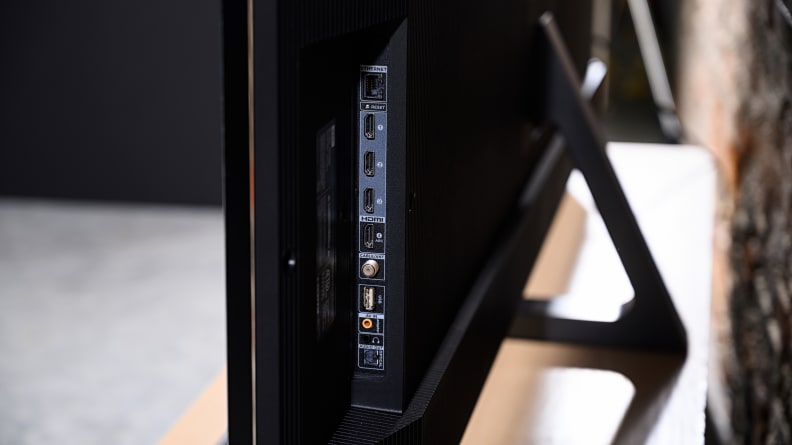
For most people, the TCL 8-Series is equipped with enough connectivity options to keep their home theater in tip-top shape. Here's what you'll find on the back of the panel:
• 4x HDMI 2.0 (1x ARC) • 1x USB (USB 2.0) • Component, LAN ethernet port, RF input, optical audio output • 3.5mm headphone jack
Performance Data
Performance Data
Before testing each TV, we make sure the panel is on and receiving a continuous signal for at least 24 hours, allowing the pixels plenty of time to warm up.
For SDR tests, we used the TCL 8-Series’ “Movie” picture setting. For HDR tests, we used the TV’s “Normal” picture setting.
We use a standard ANSI checkerboard pattern for most of our basic contrast tests (including the ones reported below), but we also use white and black windows ranging from 2% to 90% to test how well the contrast holds up while displaying varying degrees of brightness.
I'll expand on our test results throughout the review, but for now, here are some key takeaways:
• HDR contrast (brightness/black level): 920.5 nits / 0.127 nits (ANSI checkerboard) • SDR contrast (brightness/black level): 541.9 nits / 0.08 nits (ANSI checkerboard)
• HDR peak brightness: 1,440 nits (40% white window)
• HDR color gamut coverage: 95% (DCI-P3/10-bit) • SDR color gamut coverage: 89% (Rec.709)
• Viewing angle: ±51°
Note: These are pre-calibration test results.
What We Like
What We Like
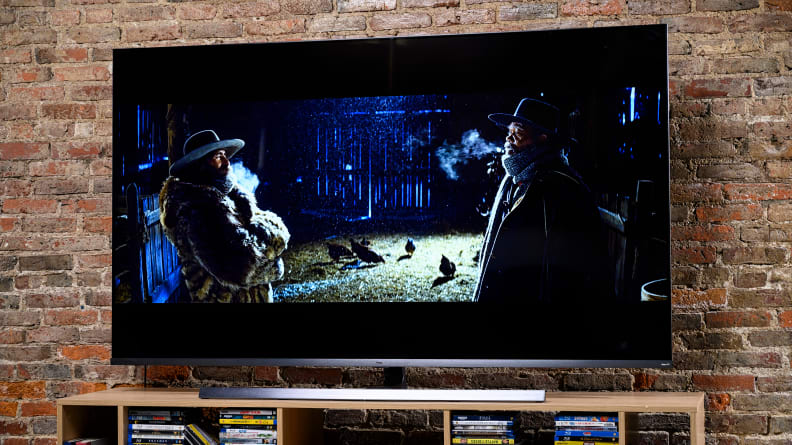
The TCL 8-Series is among the brightest TVs we’ve ever tested. Run-of-the-mill SDR content (that is, Blu-rays, cable TV, and most streaming content) looks phenomenal on the 8-Series, and HDR content, unsurprisingly, is dazzling to behold on the 8-Series’ QLED panel. Being a QLED TV, the 8-Series harnesses the power of quantum dots, which allow for a brighter, more colorful picture than what you might’ve come to expect from standard LED TVs.
The 8-Series is also equipped with a new technology engineered by TCL: mini-LED. While most backlit TVs with full-array local dimming software feature anywhere between a dozen and several hundred LED zones, the TCL 8-Series features several thousand tiny LEDs, allowing for tightly controlled contrast second only to the self-illuminating pixels on an OLED display.
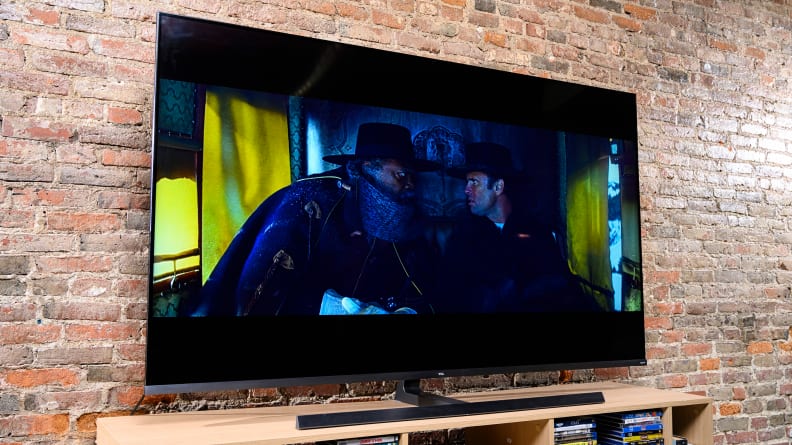
And although the black levels on the TCL 8-Series aren't nearly as deep as those found on an OLED, it doesn't matter that much when you're looking at a TV that gets nearly twice as bright as the brightest OLED we've ever tested.
The quantum dot advantages don't stop at brightness: Colors on the TCL 8-Series are sure to turn heads. It's able to cover about 97% of the wide P3 color gamut, and the QLED hype is abundantly clear when watching content mastered in HDR. Whenever I unbox a TV with quantum dots, the first thing I do is drop in the Blu-ray of a colorful movie. Watching "Guardians of the Galaxy: Vol. 2" on our 75-inch 8-Series loan unit was the most impressive I've seen the movie since its release in theaters.
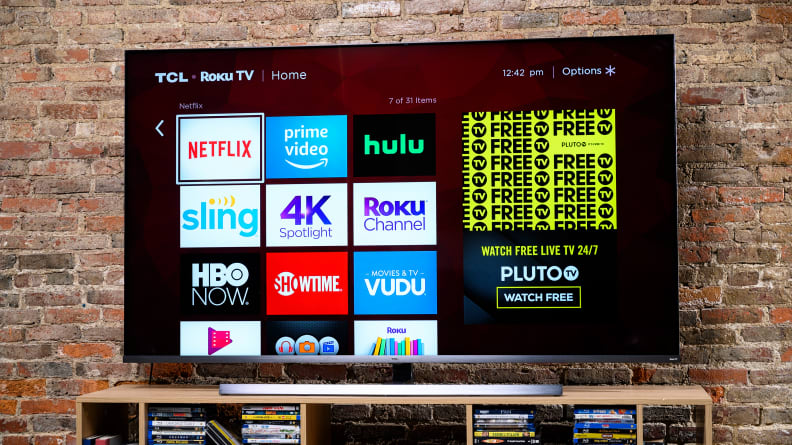
One of our favorite things about TCL TVs is that they typically come with a Roku smart platform built right into the TV's software. Essentially, it's everything we love about our favorite streaming box without a Roku box or stick clogging up one of your TV's HDMI ports.
The built-in smart features of Roku TVs are a great way to squeeze a ton of value out of a mid-level TV, but when married to the top-notch performance of the 8-Series, it's an even bolder selling point.
The TCL 8-Series features a native refresh rate of 120Hz, and in action, I had no qualms with the TV's motion handling, even during busy, fast-paced content like a football game. You'll probably want to play with the 8-Series' "Motion Clarity" and "Action Smoothing" settings in order to find your sweet spot, but the baseline motion performance is reliably good across all content types.
What We Don't Like
What We Don't Like
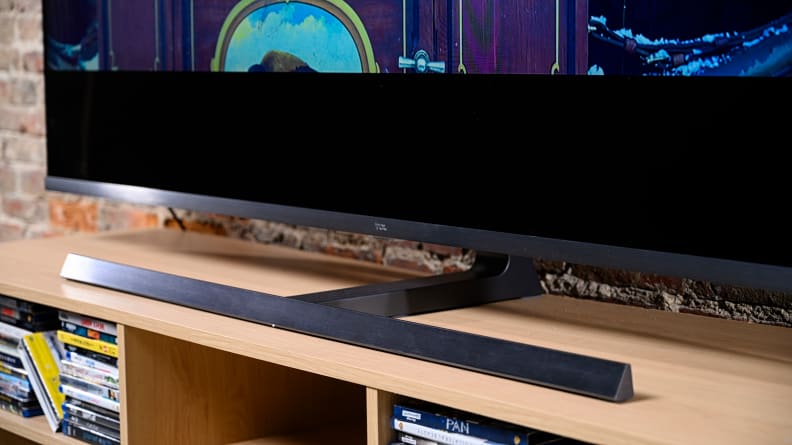
The TCL 8-Series' stand is a heavy metal bar that anchors the TV by way of an angular, elbow-shaped arm that screws into the back of the panel. The 8-Series' visage is wrapped with thin bezels, though the bottom bezel is about twice as wide as the top and sides. The design itself isn't bad, but compared to the high-end TVs competing with it (the LG C9 and Vizio P Series Quantum X, for example), the chunky feel of the 8-Series isn't as desirable.
And although the 8-Series' viewing angles were wider than most of the full-array TVs tested in the last year (thanks to the mini-LEDs, no doubt), the picture begins to deteriorate once you move about five feet to the side of a direct angle. The contrast takes most of the hit, but colors, too, become washed out as you move to the side. This was especially disappointing to witness on our gorgeous 75-inch review unit, since flexible viewing angles are precisely the sort of thing you want from a TV this size.
Should You Buy It?
Should You Buy It?
Yes, particularly if brightness and easy-to-use software are on your list of must-haves.
The 8-Series is the best TV that TCL has released to date, performing at a level that rivals perennial heavy-hitting flagships from LG, Samsung, and Vizio. As far as how the 8-Series stacks up against those heavy-hitters, the question, as usual, comes down to this: Would you rather have the tightly controlled contrast and near-perfect picture quality of an OLED, or the incredibly bright, vivid picture of a QLED TV?
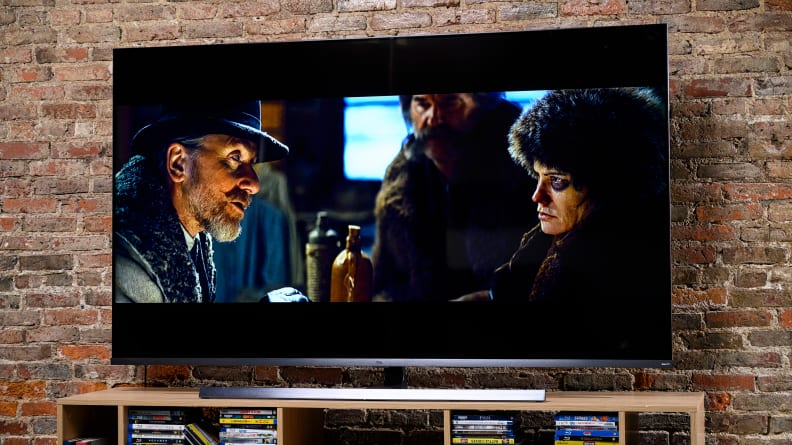
There are other factors to consider, of course, like what you look for in a TV's design. That said, if you're committed to nabbing one of the best TVs money can buy, you'll eventually need to choose between OLED and QLED, and among the latter category, the 8-Series is one of the best on the market. It also comes in at a slightly lower cost than most of its competition (though the price is no where near as budget-friendly as the TCL Roku TVs we usually see).
The marriage of quantum dots and TCL's min-LED tech is a flashy, in-your-face TV experience, and I can't wait to see it develop in the years to come.
Meet the tester
Michael Desjardin graduated from Emerson College after having studied media production and screenwriting. He specializes in tech for Reviewed, but also loves film criticism, weird ambient music, cooking, and food in general.
Checking our work.
Our team is here to help you buy the best stuff and love what you own. Our writers, editors, and experts obsess over the products we cover to make sure you're confident and satisfied. Have a different opinion about something we recommend? Email us and we'll compare notes.
Shoot us an email
